Metropolitan and City Police Orphanage, Twickenham, Middlesex
The Metropolitan and City Police Orphanage was founded in January 1870 for the orphaned children of London police officers. The proposal for such an institution was instigated by Sir Edmund Henderson, Commissioner of Metropolitan and City Police from 1869 to 1886. The home's first premises were opened in October of that year at Fortescue House, on London Road, Twickenham. The following year, admission to the establishment was opened to the City of London police, then a separate force.
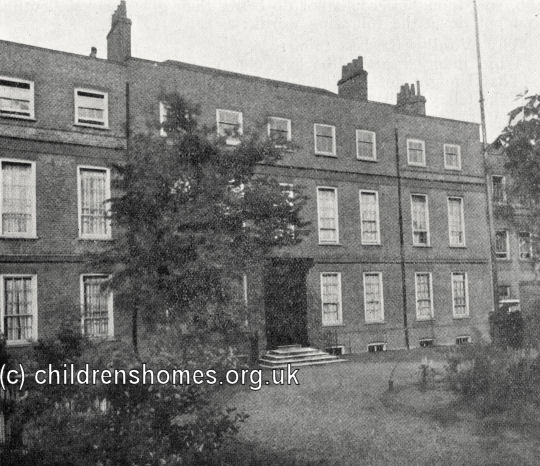
Fortescue House, London Road, Twickenham. © Peter Higginbotham
To deal with growing numbers, extra accommodation was taken at Bath House, across the road from Fortescue House. Then in 1874, with over a hundred children in its care, the orphanage moved to a larger property known as Wellesley House on Hampton Road, Twickenham. Not long afterwards, Fortescue House was taken over as a boys' home by The National Refuges for Homeless and Destitute Children (later known as the Shaftesbury Homes).
The location of the Hampton Road premises is shown on the 1934 map below.
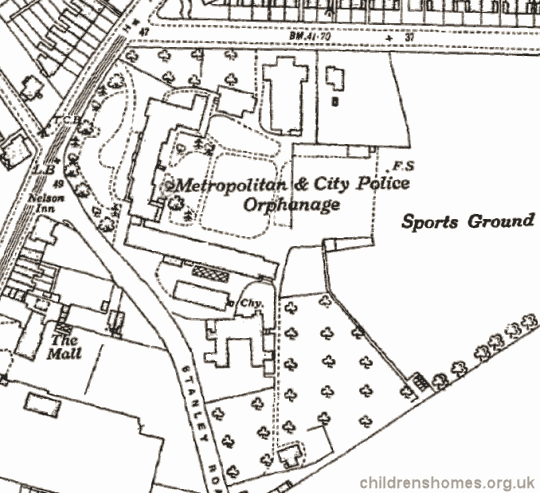
Metropolitan and City Police Orphanage site, Twickenham, c.1934.

Metropolitan and City Police Orphanage from the west, Twickenham, c.1905. © Peter Higginbotham
A useful outline of the orphanage's details is provided by an 1890 directory:

Metropolitan and City Police Orphanage from the south-west, Twickenham, c.1916. © Peter Higginbotham
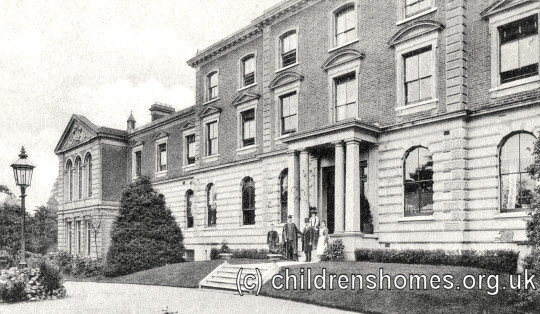
Metropolitan and City Police Orphanage from the south-west, Twickenham, c.1916. © Peter Higginbotham
In 1882, a new wing housing an additional sixty children was opened by the Prince of Wales, later King Edward VII. It was named the Burdett Coutts Wing after Baroness Burdett Coutts whose interest-free loan of £3,000 had made its construction possible.

Metropolitan and City Police Orphanage from the north-east, Twickenham, c.1916. © Peter Higginbotham
Another addition was the Henry Whiting Wing, named after the founder of the Police Relief Fund, who was a generous donor to the home.
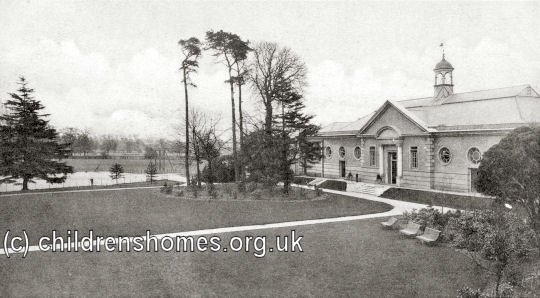
Metropolitan and City Police Orphanage, Henry Whiting Wing, Twickenham, Henry Whiting Wing. © Peter Higginbotham

Metropolitan and City Police Orphanage, Henry Whiting Wing, Twickenham, Henry Whiting Wing. © Peter Higginbotham
Subscriptions from officers in memory of the colleagues who had died in the First World War funded the War Memorial Hospital, opened at the orphanage site in 1923 by the Prince of Wales, later the Duke of Windsor.

Metropolitan and City Police Orphanage, Twickenham, dining-hall, c.1916. © Peter Higginbotham

Metropolitan and City Police Orphanage, Twickenham, classroom, c.1916. © Peter Higginbotham

Children Metropolitan and City Police Orphanage, Twickenham, dormitory c.1909. © Peter Higginbotham
Other facilities added to the home over the years included a swimming pool, gymnasium, laundry, workshops, and even a cinema.

Metropolitan and City Police Orphanage, Twickenham, gymnasium, c.1916. © Peter Higginbotham
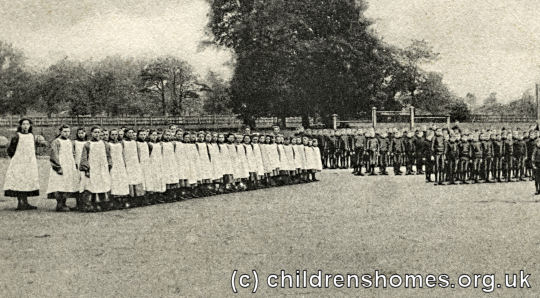
Metropolitan and City Police Orphanage, Twickenham, drill ground, c.1916. © Peter Higginbotham
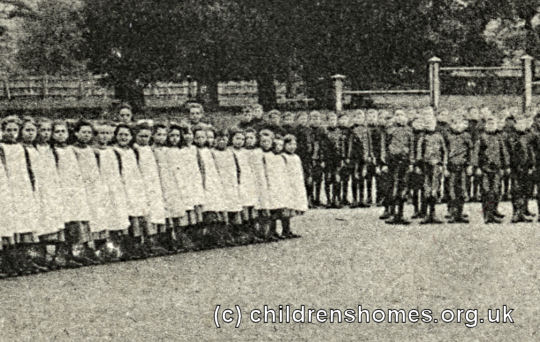
Metropolitan and City Police Orphanage, Twickenham, drill ground (detail), c.1916. © Peter Higginbotham
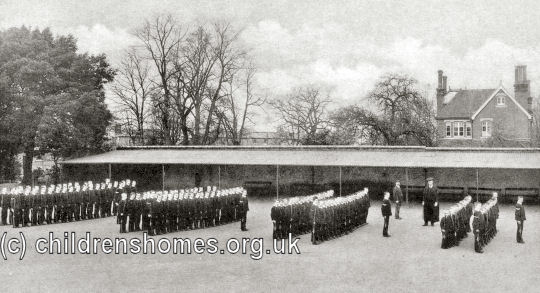
Metropolitan and City Police Orphanage, Twickenham, boys at drill. © Peter Higginbotham
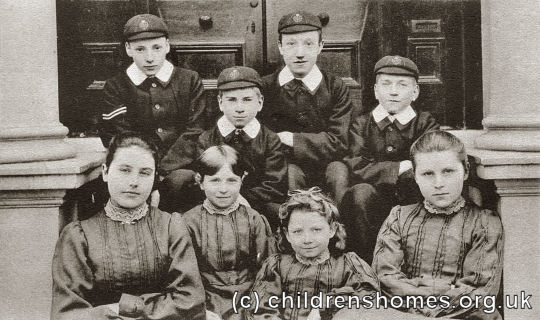
Children Metropolitan and City Police Orphanage, Twickenham, c.1909. © Peter Higginbotham
Increasing problems in funding the home, coupled with an increase in the pensions provided to the widows and families of police officers, led to the home's closure in 1937. The premises were subsequently occupied by the Fortescue House School for Boys.
The buildings no longer survive and modern housing now covers the site.
Records
Note: many repositories impose a closure period of up to 100 years for records identifying individuals. Before travelling a long distance, always check that the records you want to consult will be available.
- Metropolitan & City Police Orphans Fund, 30 Hazlewell Road, Putney, London SW15 6LH. Holds Admission Registers, Annual Reports, Board of Management Minutes, General Court Minutes and Compassionate Allowances Registers.
Census
Bibliography
- Higginbotham, Peter Children's Homes: A History of Institutional Care for Britain s Young (2017, Pen & Sword)
Links
Except where indicated, this page () © Peter Higginbotham. Contents may not be reproduced without permission.


